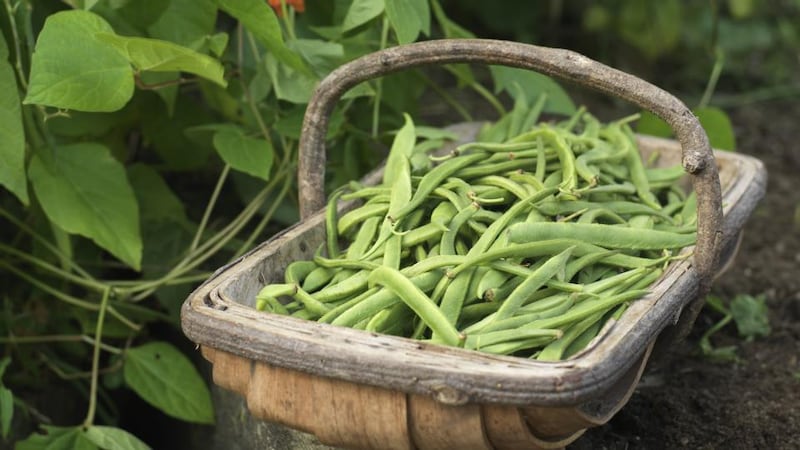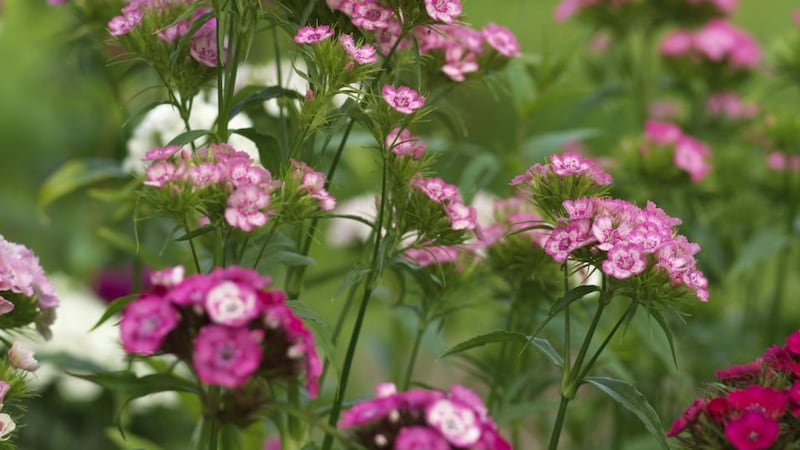The very best gardens are those that feed the mind, body and soul. An example is the pint-sized kitchen roof garden which I spotted on a recent trip to London, a place where purple-leafed lettuce grew cheek by jowl with edible orange pansies, and handsome containers were filled with aromatic culinary herbs. Beautiful and bountiful, it packed a mighty punch despite its diminutive size, proving that food can be successfully cultivated in the smallest of spaces.
There’s a secret to doing so, of course, which lies in the careful considered choice of plants. When space is this tight, the wisest strategy is to rely on varieties that are fast-growing, productive, flavoursome, and which look every bit as good as they taste.
It also makes sense to grow food crops that are either impossible to find, or expensive to buy. In other words, don’t give inches of valuable space to cabbages, cauliflowers, onions or carrots, all of which can be easily found in the organic section of your local supermarket, but keep it for those plants with the power to radically transform a home-cooked meal.


An obvious example is edible flowers, which will not only give months of summer colour, but their petals can be used to add some full-octane glamour to both sweet and savoury dishes.
Choose varieties that are easy to grow, floriferous, long-flowering and happy in a container, such as the fiery-flowered pot marigold which will remain in bloom throughout the summer as long as you give it a sunny spot and keep it deadheaded. So will the annual nasturtium, all parts of which are edible. Scarlet-flowering runner beans (both flowers and pods are edible) are also happy to grow outdoors in a large tub as long as the plants are kept well fed and watered. The same goes for roses, whose edible petals can be used to make a delicious syrup, or a rose-flavoured ice cream – just make sure to choose one of the patio and miniature types suitable for container growing.
For a wonderfully colourful edible display that begins in mid-summer and continues until the first hard frosts, try growing edible annual flowers in a large container in combination with dahlias (also edible) and the delightfully decorative leaves of Swiss chard “Bright Lights”, whose vividly coloured stems come in shades of tangerine, gold and scarlet. This tasty, leafy vegetable is almost never seen for sale in supermarkets, for the simple reason that it needs to be eaten within a few hours of harvesting. Sow seed now, or buy as young plants in a garden centre.
Swiss chard isn’t the only highly decorative leafy vegetable that’s difficult or expensive to buy and which looks right at home in a container.
Yet another is kale, and in particular the ultra-hardy variety known as “Cavolo Nero”. This handsome, edible plant keeps its plumes of inky blue-green leaves right throughout the winter and can be treated as a cut-and-come-again crop, allowing you to pick handfuls of those vitamin rich leaves for months on end. Come spring, you can also eat its clusters of bright yellow flowers, which are sweet, crunchy and tasty, as well as beloved of bees.
Another kale variety suitable for container growing is “Ragged Jack”, whose tender, frilly leaves are a painterly shade of eau de nil, veined in dusty pink. Seed of both varieties can be sown now. For a colourful spring container, grow these plants in combination with violas and tulips; the latter, which should be planted as bulbs in autumn, has edible petals that taste of fresh peas.
Other fast-growing, decorative leafy food crops that can be sown now and which are very happy in summer pots or containers include varieties of lettuce, the red-veined "Dragon's Tongue" rocket, purple-leaved perilla, Orach "Purple Emperor" and the purple-veined "Bloody Sorrel" (available as seed from seedaholic.com).
Most herbs, of course, are also brilliantly suited to container cultivation. Not only does it save money, but their flavour is more intense when home-grown and freshly harvested, while their aromatic foliage adds another pleasurably perfumed element to the smallest of kitchen gardens.
Along with the obviously useful kinds, seek out the delightful lemon verbena (Aloysia citridora) , a frost-hardy shrubby plant with slender, intensely lemon-scented leaves that can be used to make a fragrant herbal tea or a delicious granita. Strawberries, including the white fleshed, pineapple-flavoured pineberry (available to order now from mowitsowitgrowit.co.uk) are yet another delicious addition to the container kitchen garden.
Most of the plants mentioned above prefer full sun and long hours of sunshine, but there are some that will do just fine in partial shade including many of the leafy greens, as well as herbs such as mint, coriander and chives.
Or for something very different, try wasabi (both roots and leaves are edible), which enjoys a damp, very shady spot (see edulis.co.uk).
Finally, if you can give them a bright spot under cover, either in a sunny porch, conservatory or next to a sunny window indoors, you can also grow chillies, tomatoes and basil in pots for harvesting from late summer until autumn, as well as delicacies such as the delicious Inca berry.
So don’t be put off by a lack of growing space. Small it might be, but a pint-sized, pot-sized kitchen garden has the power to completely transform the way you eat.

This week in the garden
Plant out young squash, courgette, pumpkin and sweet corn plants before they become pot bound, making sure to give them a fertile weed-free soil in full sun. Sow seeds of flowering biennials and perennials such as wallflowers, honesty, sweet William, foxgloves, lupins, columbines, delphiniums and Hesperis matronalis, either into containers or into a well-prepared seedbed, for transplanting into their final position in autumn. Keep container grown plants well watered, as they can quickly dry out at this time of year. This is best done either early in the morning or late in the evening.












